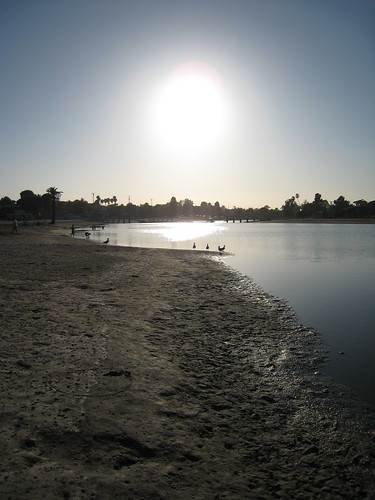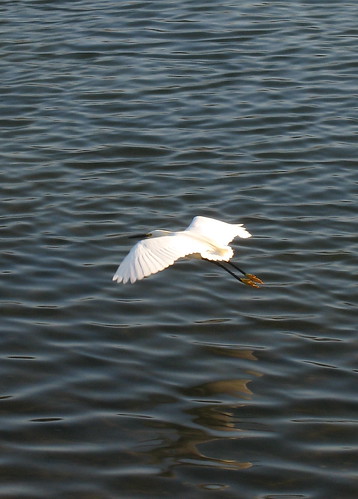Colorado Lagoon is an inland arm of Alamitos Bay, reaching up to 7th Street. Most of the park is maintained as recretaional lawn, although there is also an artificial beach ("Mother's Beach"). Water quality at this beach is extremely low, so swimming is not always advisable. The City has identified some major sources of bacteria in the lagoon, although remedies have yet to result in improvements.

Notwithstanding the poor water quality, the park is a lovely place for an afternoon stroll or picnic. Despite the fact that the park is extensively developed, there are considerable natural resources to appreciate here. You can observe one of southern California's most threatened habitats here: the coastal salt marsh.

Although vegetation maintenance prevents the marsh from reaching its full splendor in most areas, small patches of wetland dot the perimter of the lagoon, especially along the "peninsula" that divides the lagoon into two arms.

Salt grass (Distychlis spicata)

Small "meadow" of salt grass.
In the above picture, low-growing salt grass (Distychlis spicata) forms a spongy mat near the shore.
Pickelweed (Salicornia) is another common salt marsh plant. These plants tolerate the salty conditions by sequestering salt crystals in their succulent tissues. Although this plant is edible, DO NOT collect and eat plants from this park!


Pickelweed (Salicornia spp.). There are several species in California, and all are hard to distinguish.
A similar-looking (but unrelated) plant is salt-wort.


Saltwort (Batis maritima). The picture on the right shows saltwort growing low around the taller pickelweed.
A few plants add some color to the salt marsh.

Alkali heath (Frankenia salina)

Marsh jaumea (Jaumea carnosa)
There are some interesting bluffs along the eastern shore of the lagoon, and they remind me of a miniature version of Newport Bay.

Unfortunately, these bluffs are dominated by nonnatives--mostly iceplant (Carpobrotus edulis), which has no value to wildlife. Hopefully, the bluffs can be restored to create a diverse community of colorful native coastal bluff plants.
Although the wetlands are very limited in size, and in general are in poor condition, there are great opportunities for restoration, which may be highly succesful (given the low relief of the landscape).

A floating dock/bridge across the lagoon lets you get close to the water and examine the marine life up close.
Peering underwater, you can see lots of organisms. For example:

Crabs

Snails (or their shells washed ashore)

Fish (These are teeny-weeny fish fry. If you need help spotting them, click here)
When the sun is out, you may notice that the mud on shore and in the shallows turns golden-brown:

This color comes from diatoms--single celled algae. These algal cells hide in the silt when it's shady, but come up to the surface when they can photosynthesize in the sun. They move by propelling themselves on mucus they secrete. Pretty cool, huh?
This is also a great spot for birdwatching. Egrets and herons forage in the shallow water for fish. Terns, gulls, ducks, and pelicans are common as well.

Snowy egret (Egretta thula) foraging near the wetland.

The same egret, soaring over the lagoon.
LB Transit bus routes 81, 92, 93, 94, 181, and 182 will take you to Colorado Lagoon.


2 comments:
great photos.. crystal clear.. thanks for naming all the plants too.. hopefully this area will be restored someday like we have done down in orange county.. you need noisy people with time on their hands though to get this kind of stuff done.. it's hard..keep up the good work.. kit
the kids visited the lagoon in the winter months. The next field trip for the staff picnic at sears building irvine with steven and mike for wetlands asset protection
Post a Comment